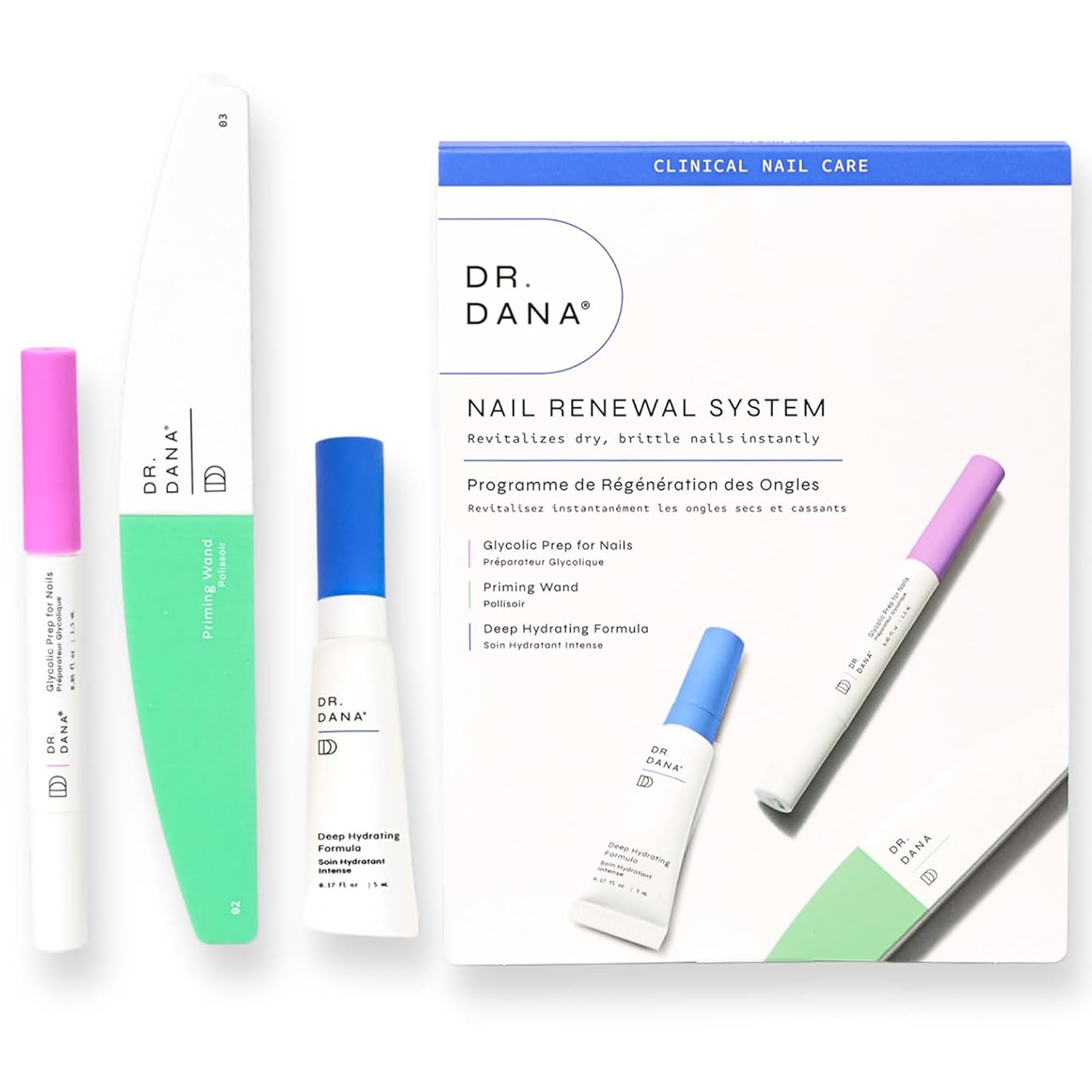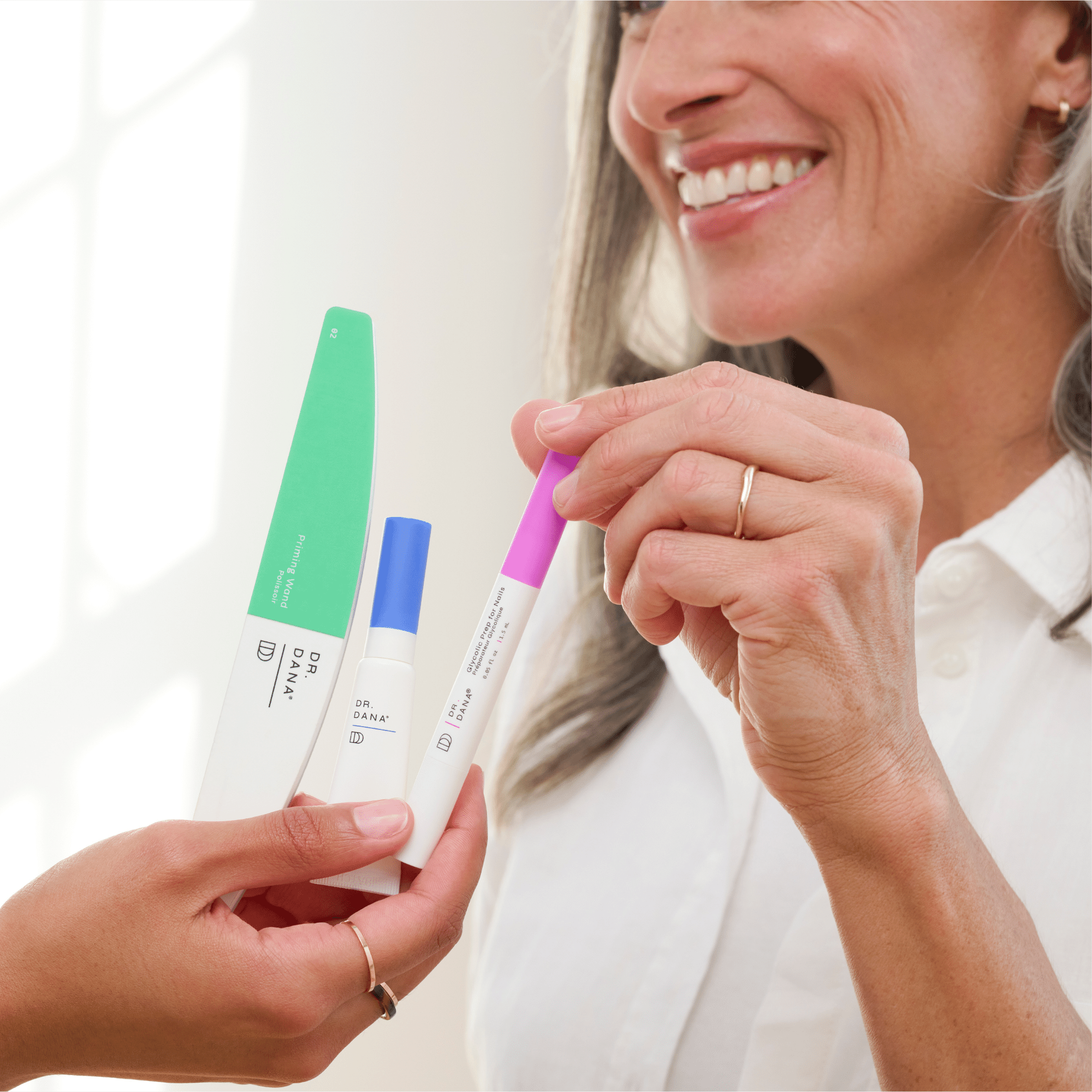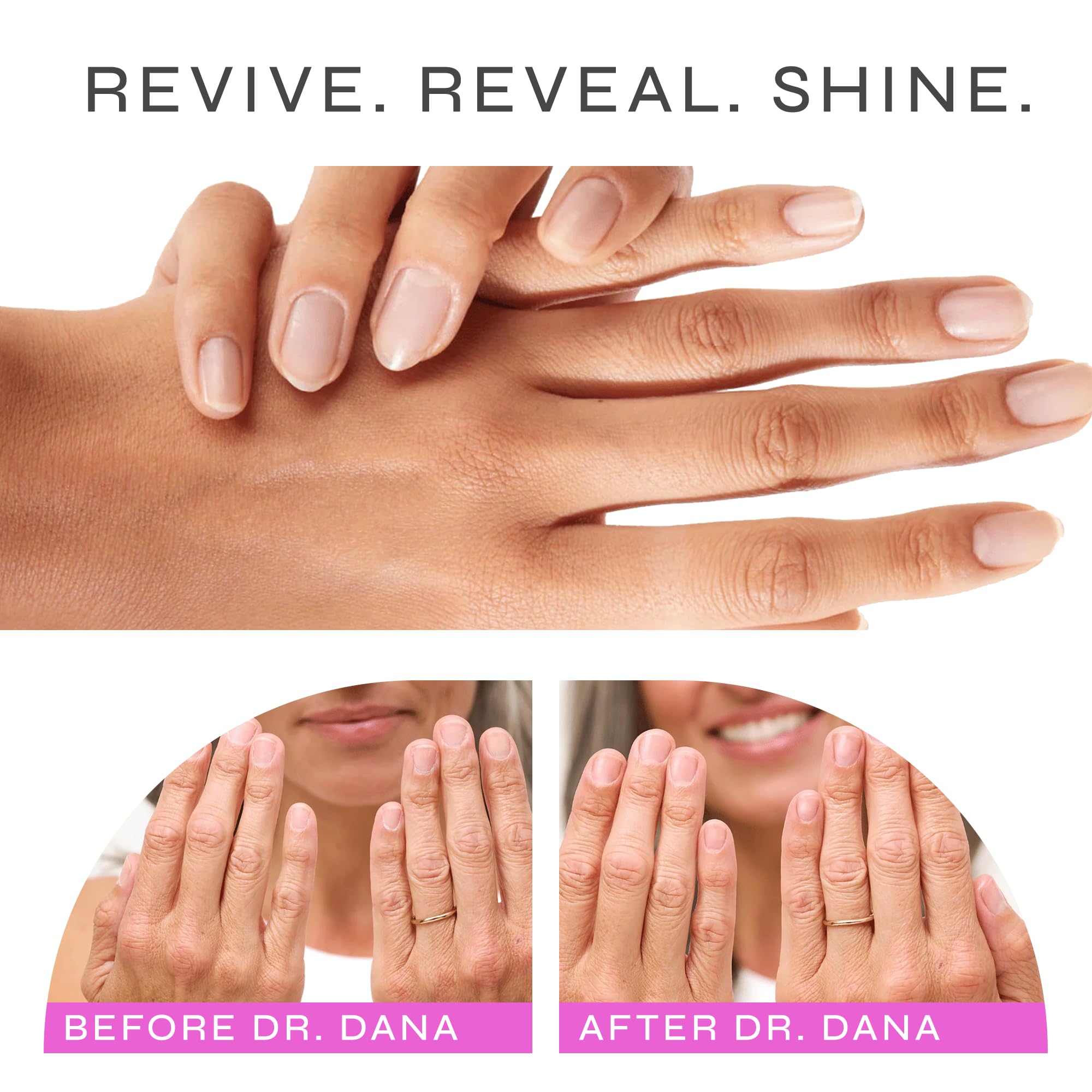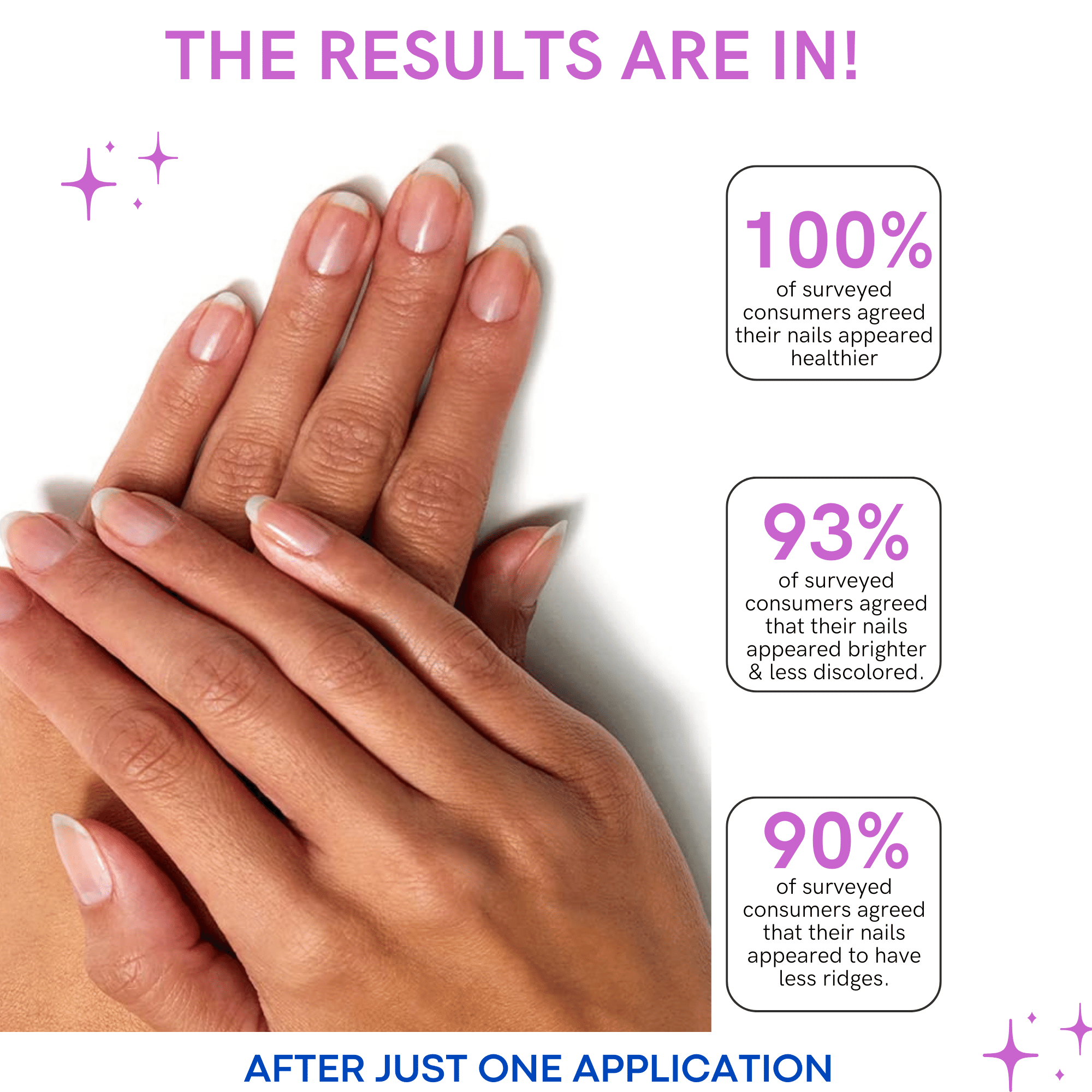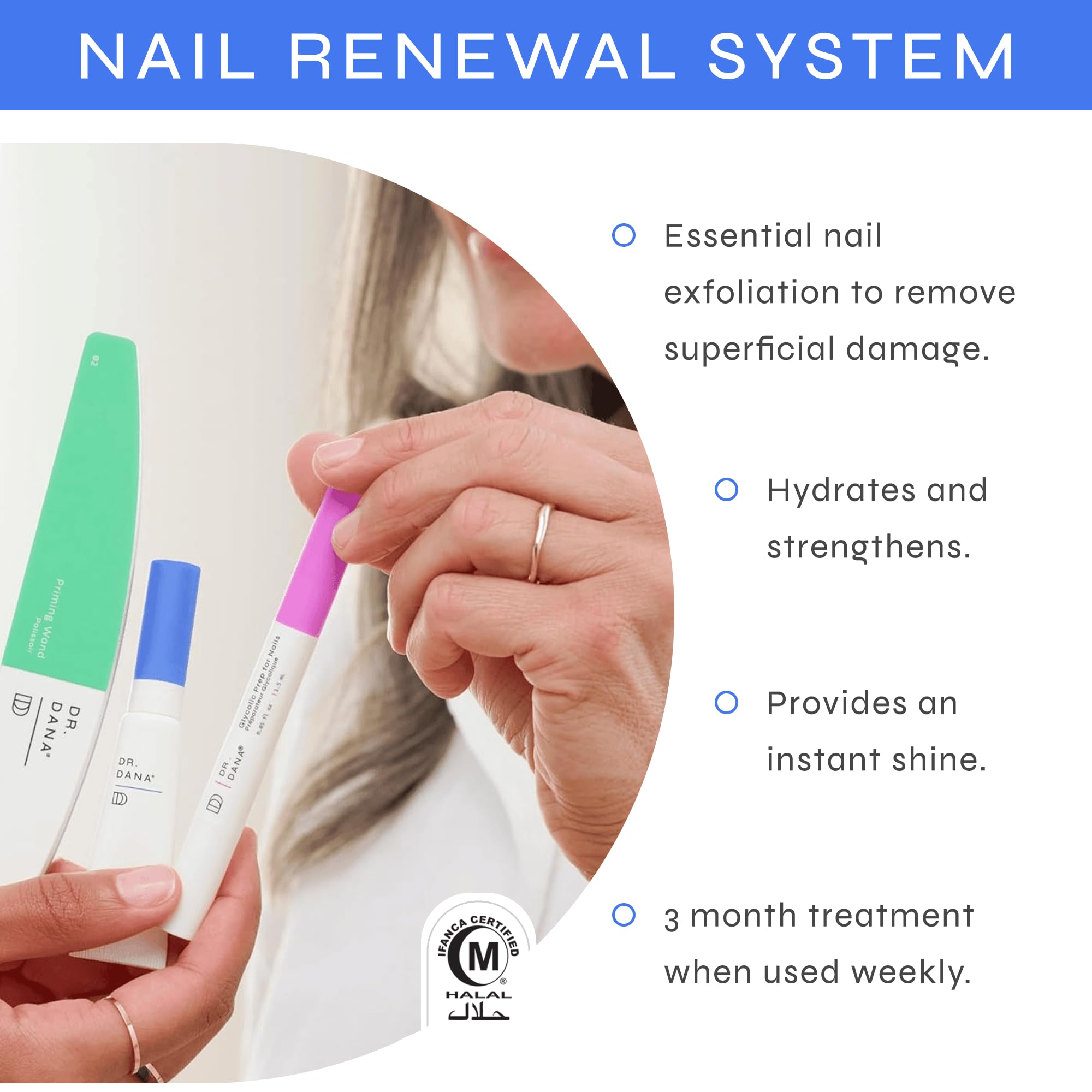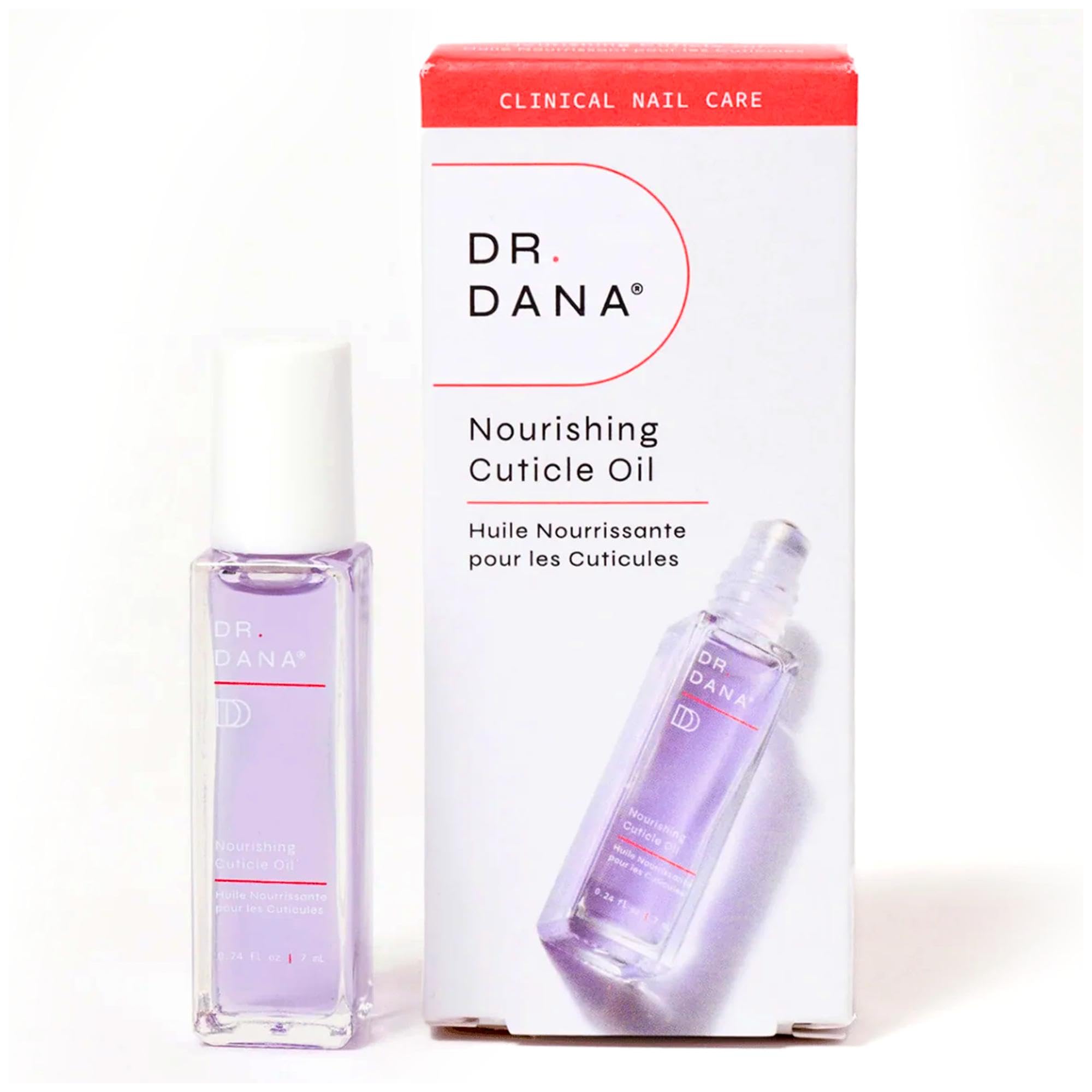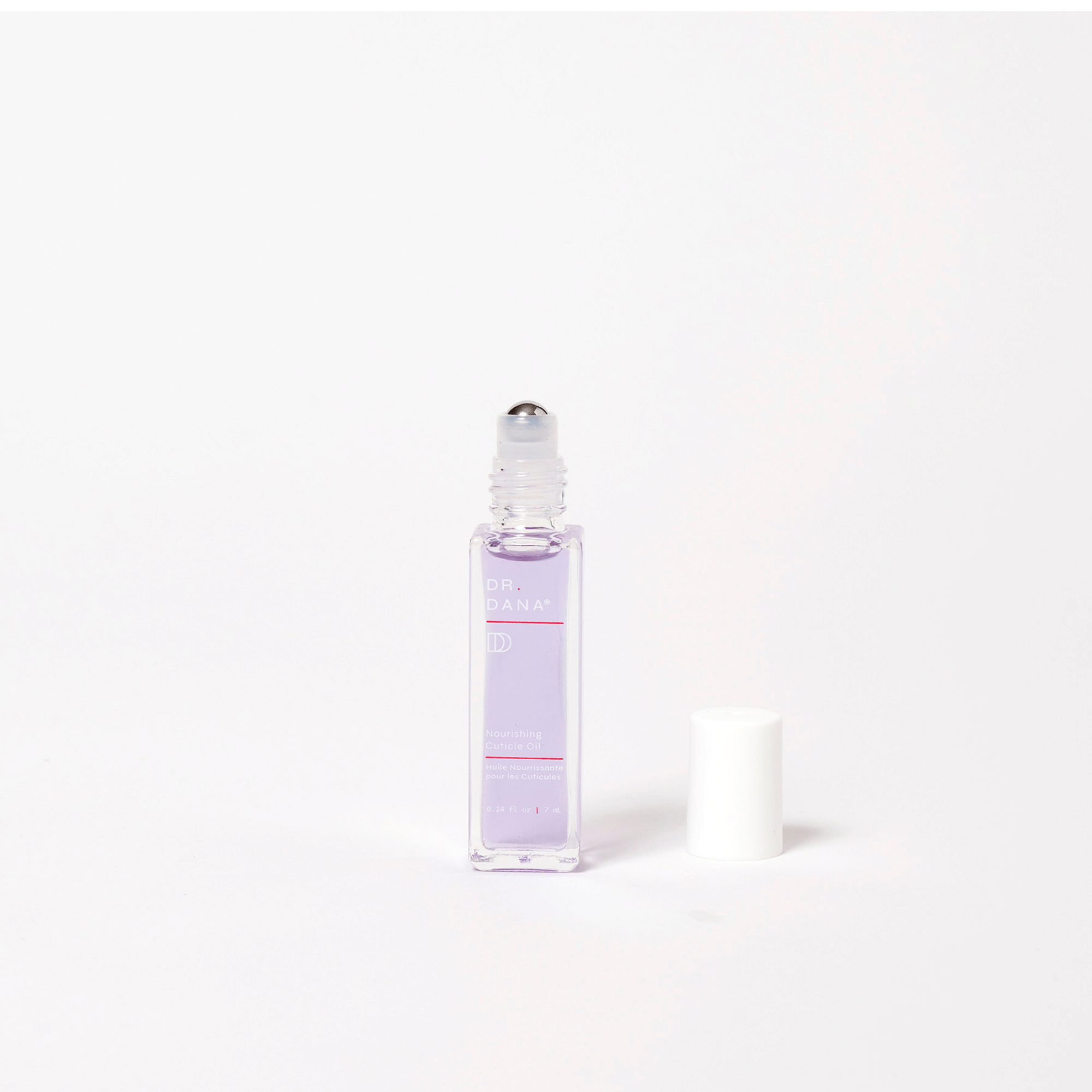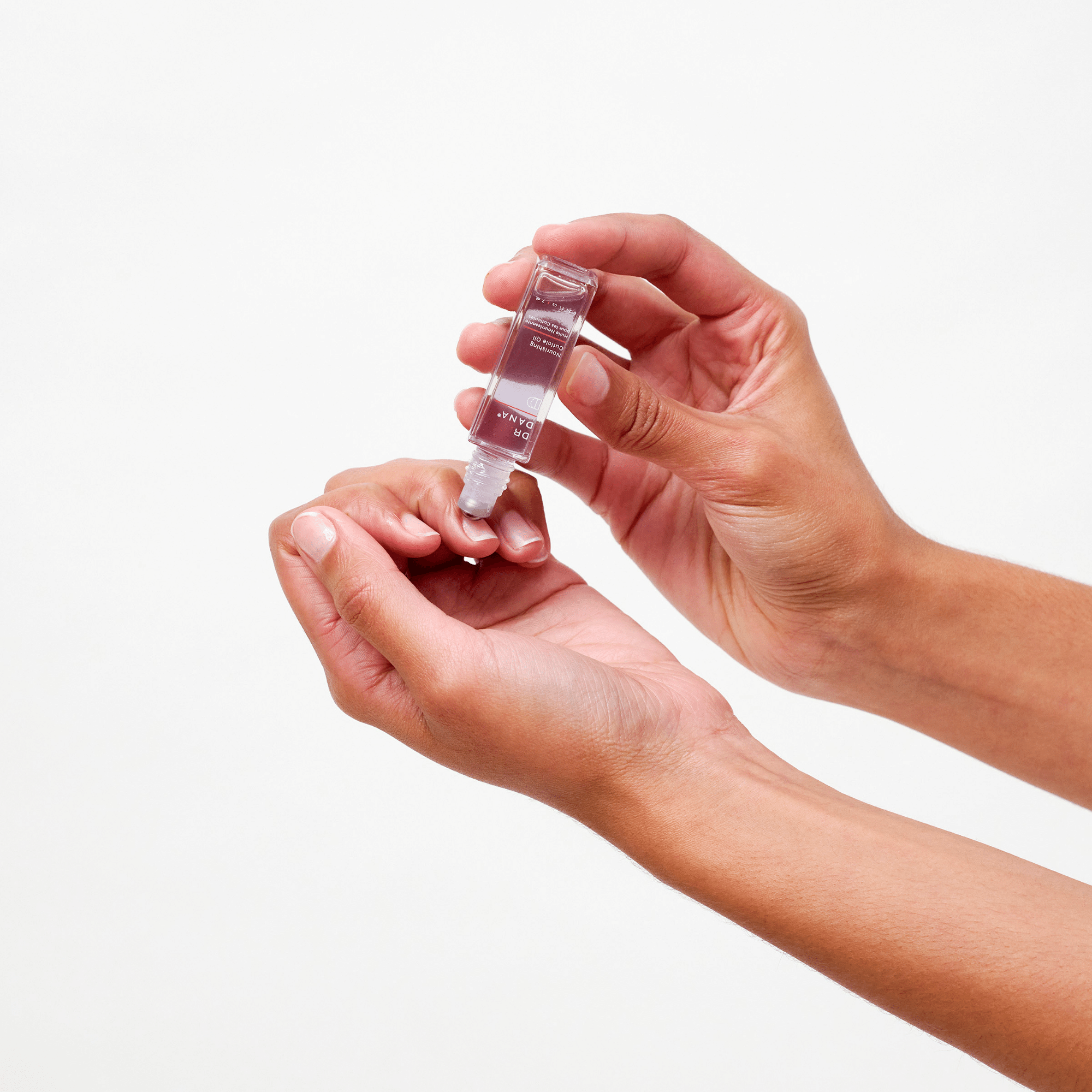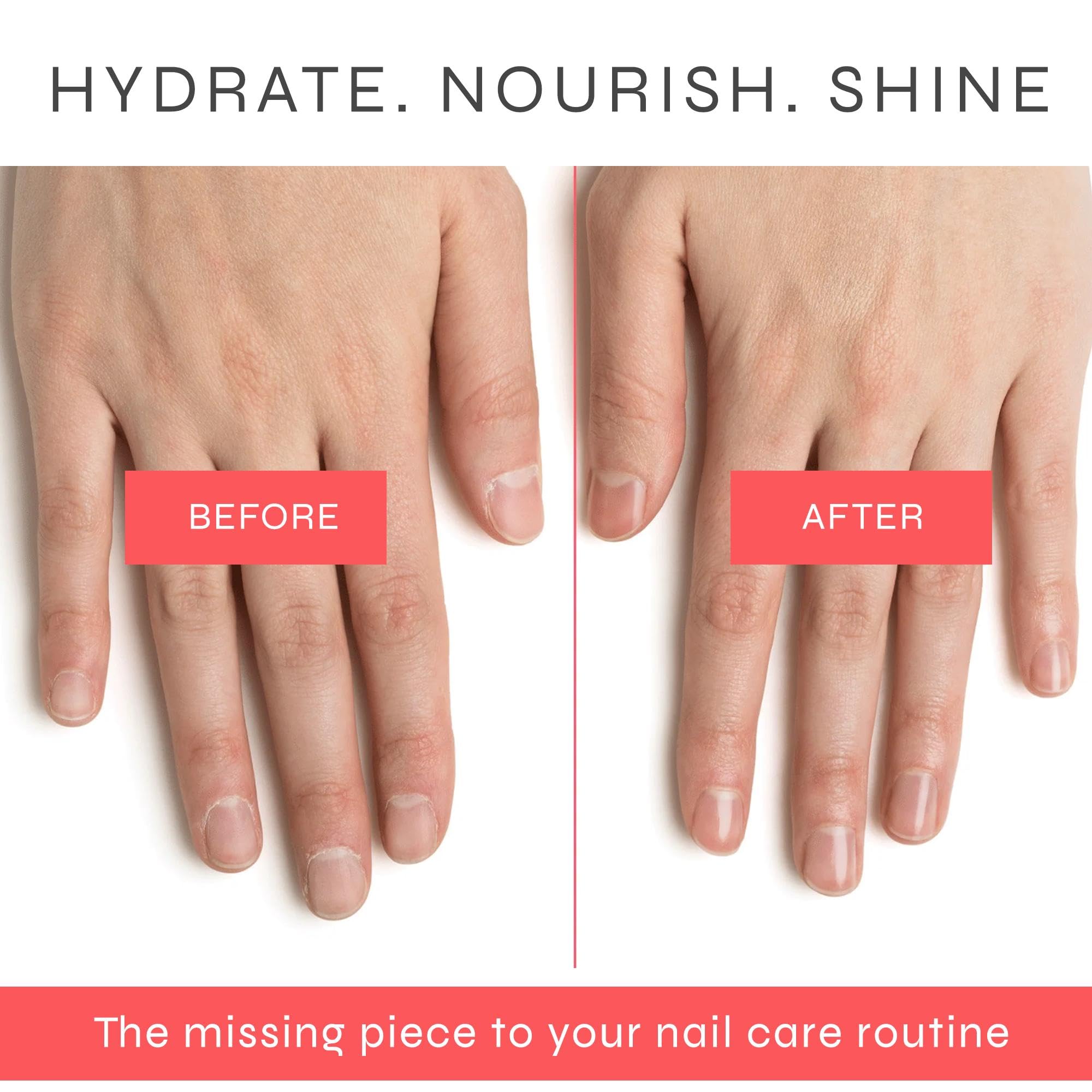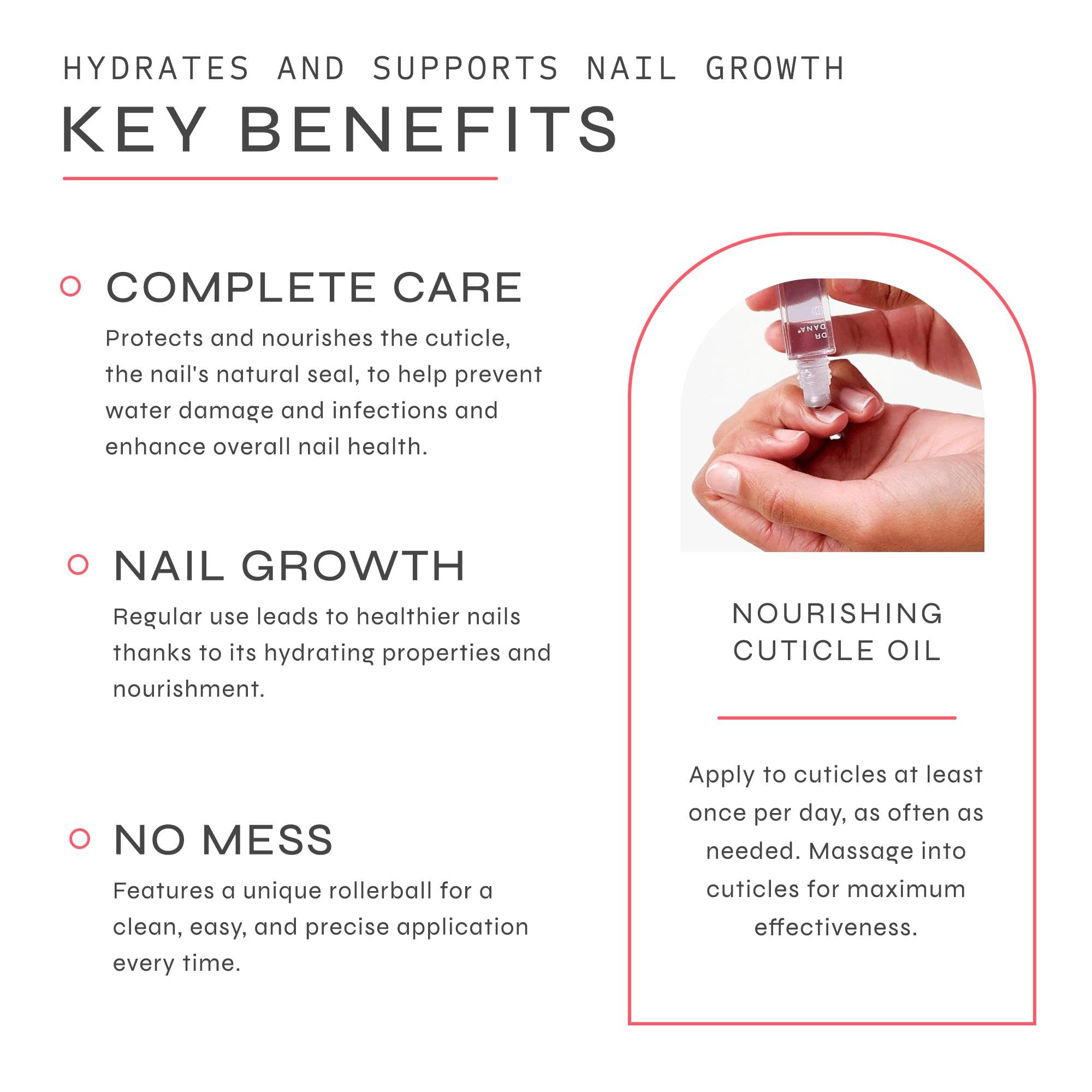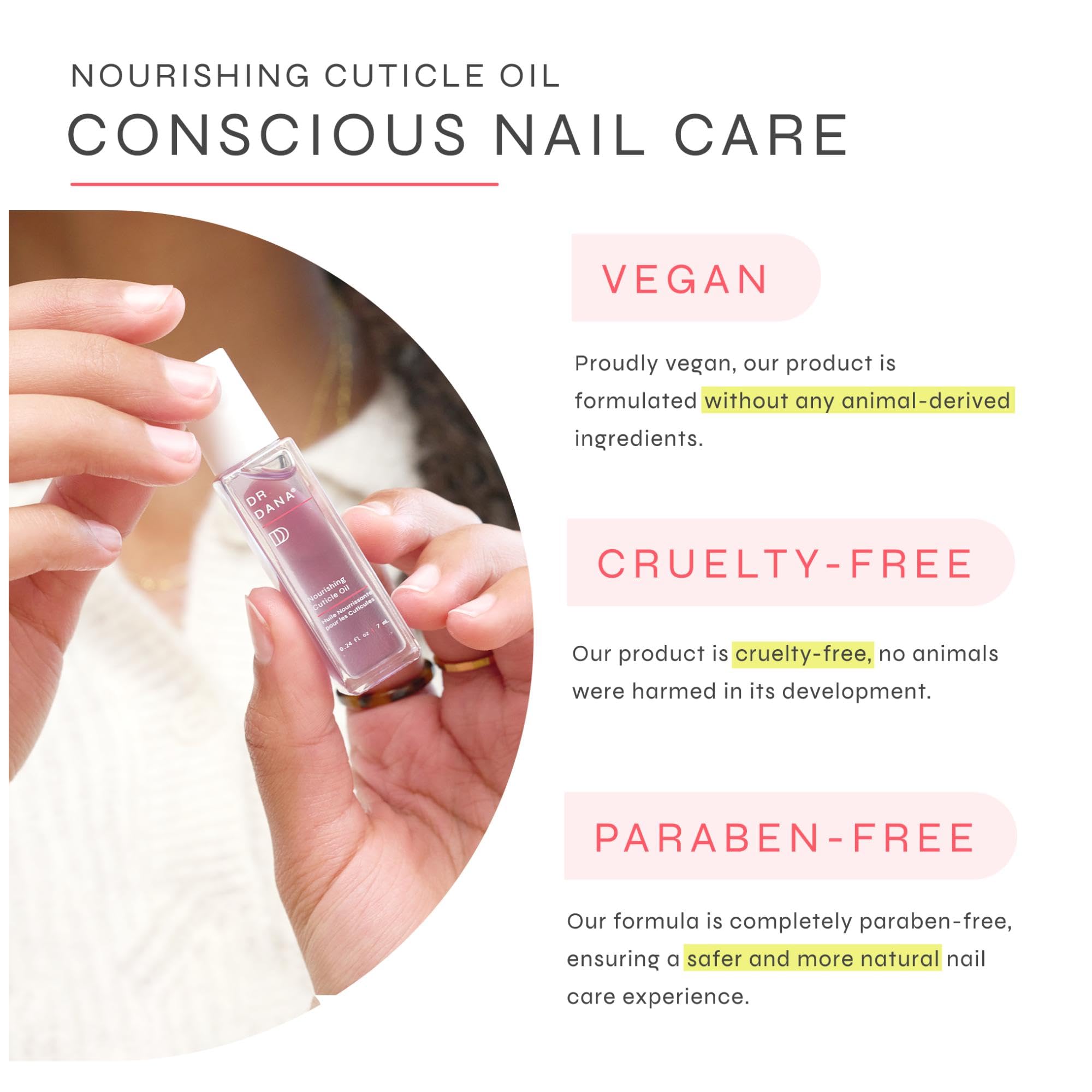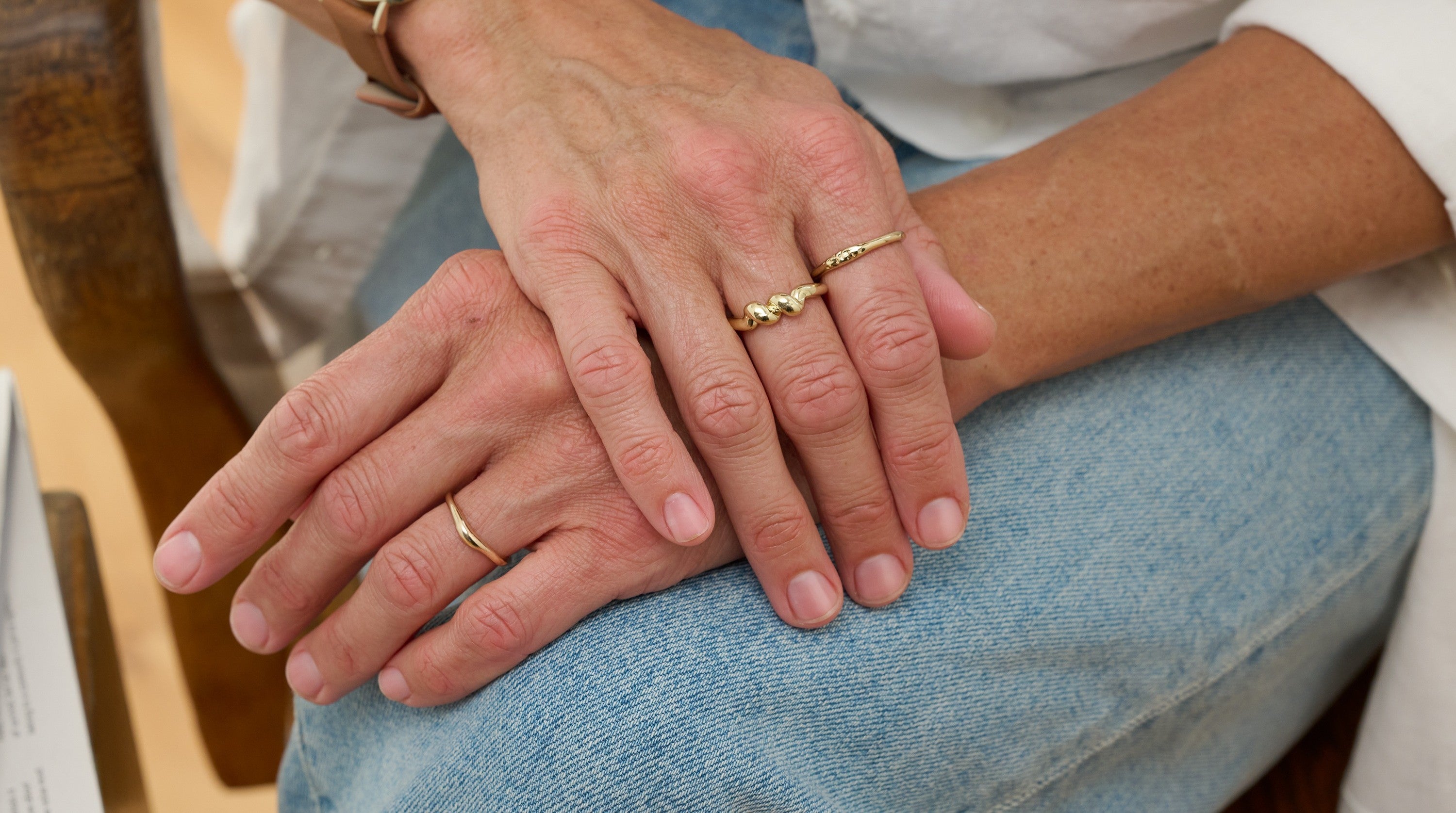Dr. Dana Stern, board-certified dermatologist and founder of Dr. Dana, has dedicated her professional career to educating patients and the larger community about nail health and treatment. (Check out her videos on TikTok!)
While many nail issues can be treated either at home or under the care of a doctor without much stress or worry, it’s also important to recognize when a change in your nail health or appearance might indicate something more serious.
You likely know that melanoma is a type of cancer that is most typically associated with the skin, but are you aware that it can occur in the nails as well? It happens when the pigment-producing cells (or melanocytes) begin to grow uncontrollably. If caught early, it is quite curable. Unfortunately, nail melanoma often goes undetected until much later, which makes learning about its symptoms and causes all the more important.
What does nail melanoma look like?
Melanoma in the nail appears as a single pigmented brown or black band on the nail. However, it’s important to note that melanoma is not the only cause of such a pigment band. Most brown or black pigmentation—or melanonychia—of the nail is benign and nothing to worry about. Single brown pigmented bands are usually either benign moles or simply the pigment cells “waking up” and producing pigment much like when a new freckle appears in the skin.
Early melanomas are very difficult to distinguish from benign pigmented bands. This is why it is very important to see a dermatologist for a thorough exam and consultation if you spot one. “There is definitely a lack of public knowledge about the subject, and that is one of the reasons that nail melanoma tends to be diagnosed later than melanomas on the skin,” Dr. Dana says. “Some of my nail melanoma patients are patients who are referred to me by other physicians or dermatologists who would like a second opinion or commonly don’t feel comfortable performing a biopsy on the nail. Some consultations are patients who notice something that looks abnormal and subsequently read about nail melanoma online. Unfortunately, there are cases when denial is a part of the equation, causing a delay in diagnosis. For example, I treated a young woman in her twenties who had been covering up a nail melanoma with an acrylic nail for years because she thought the nail was ugly.”
Here’s what to look out for:
- A single pigmented band that is brown or black in color on a single nail
- The band is dark in color
- There is brown pigment on the surrounding skin (around the nail)
And, of course, if you have a personal or family history of melanoma, you should mention this to your dermatologist and remain vigilant in checking your own skin and nails for changes and abnormalities. Additionally, make sure you always go for your annual skin check with bare nails and toes so that your dermatologist has a clear view of any potential abnormalities. Early detection is key to treating melanoma.
Is there a place where nail melanoma is most often found?
Yes. The thumb, index finger, and largest toenail are the most common spots.
But if I see an overly pigmented spot, I shouldn’t necessarily assume the worst right?
Correct—and this is super important. Most dark lines on nails are benign. We repeat, most are benign. In fact, pigmented bands in the nail are extremely common in many darker-pigmented individuals. The melanocytes in the nail are typically dormant (not active) which is why our nails tend to be clear. However, when the melanocytes in the nail become stimulated, they begin to produce pigment which appears as a light brown or gray band. These lines are due to benign melanocytic activation, aka the cells waking up and doing what they do: produce pigment. The discoloration is akin to sun spots on the skin and will never progress to atypical moles or melanomas. Melanomas, in contrast, are due to melanocytes growing in an uncontrolled fashion.
Okay, so when should I see a doctor?
If you see a dark pigmented band on one of your nails, you should be evaluated by a doctor. Remember to remove all polish when having your annual complete body check (for moles and other spots!) so that your dermatologist can also examine your nails. People of all skin types should have an annual exam of this type, though melanoma on acral sites (meaning palms, soles, and nails) tends to occur more commonly in darker-skinned individuals.
Are manicures safe when it comes to melanoma?
Most manicures are absolutely safe. There is no evidence that shows that manicures can lead to melanoma.
Should I take any precautions if I get gel manicures that use a UV lamp?
While some recent research has raised concerns about UV lamps during manicures, Dr. Dana believes that more studies need to be done to quantify and confirm the true risk of skin cancer from UV lamps. However, we always suggest taking precautions to protect your skin:
- Use an SPF to protect your skin from photoaging before exposure to UV light. You should apply a broad spectrum sunscreen 30 minutes prior to exposure or, alternatively, drape a fabric or use a fingertip-less glove or pedicure sock to protect the surrounding skin.
- If you can see the light, then your retina is potentially being exposed to harmful UV rays. Wear a broad spectrum pair of sunglasses, too.
- Ask your doctor about your medications and if they have photosensitizing risks. Certain medications combined with UV light can cause nail lifting, sunburn and eye damage.
As with your skin (and your health in general), you can be your own first line of defense by looking out for changes and abnormalities and then contacting a doctor if you notice anything off. It’s always better to get it checked out than to wait until the issue becomes serious.



